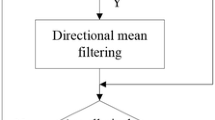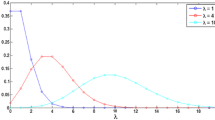Abstract
Objective
Impulsive noise constitutes a serious disturbing factor in digital radiography. The aim of this paper is to propose a new filter which is capable of eliminating efficiently this kind of noise.
Method
The filter is based on the classical switching scheme: the pulses are first detected and then corrected through a median filter. The novelty element is a pulse detector based on an adequate statistical model of the image noise. This model is constituted of a mixture of photon counting and impulsive noise.
Results
The filter operation has been verified and compared with existing algorithms on both synthetic and real images. The filter is capable to remove, on the average, more than 94% of the pulses, with a positive predictive value higher than 80%. The computational time required to filter a radiograph of 4.5 Mpixels is just above 2 s.
Conclusion
Thanks to the accurate description of the noise statistics and the efficient computational scheme implemented, the filter can be used to reliably and quickly remove impulsive noise from digital radiographs. The experimental results demonstrate the superiority of the proposed filter with respect to traditional methods.
Similar content being viewed by others
References
Polesel A, Ramponi G, Mathews VJ (2000) Image enhancement via adaptive unsharp masking. IEEE Trans Image Process 9(3): 505–510
Frosio I, Ferrigno G, Borghese NA (2006) Enhancing digital cephalic radiography with mixture models and local gamma correction. IEEE Trans Med Imaging 25(1): 113–121
Frosio I, Borghese NA (2004) A new switching median filter for digital radiography. In: Proc MIC 2004, Rome, Italy, 19–22 October 2004
Windyga PS (2001) Fast impulsive noise removal. IEEE Trans Image Proc 10(1): 173–179
Wang Z, Zhang D (1999) Progressive switching median filter for the removal of impulse noise from highly corrupted images. IEEE Trans Circuits Syst II 46(1): 78–80
Alparone T, Baronti S, Carla R (1995) Two-dimensional rank-conditioned median filter. IEEE Trans Circuits Syst II 42(2): 130–132
Pok G, Liu JC, Nair AS (2003) Selective removal of impulsive noise based on homogeneity level information. IEEE Trans Image Process 12(1): 85–92
Garnett G, Huegerich T, Chui C, He W (2005) A universal noise removal algorithm with an impulse detector. IEEE Trans Image Process 14(11): 1747–1754
Saeedl M, Rabiee HR, Kar WC, Nguyen TQ (1997) Bayesian restoration of noisy images with the EM algorithm. In: Proc ICIP 1997, pp 322–325
Eldar YC, Yeredor A (2001) Finite-memory denoising in impulsive noise using Gaussian mixture models. IEEE Trans Circ Syst II Anal Dig Signal Proc 48(11): 1069–1077
Frosio I, Borghese NA (2008) Statistical based impulsive noise removal in digital radiography. IEEE Trans Med Imaging (in press). doi:10.1109/TMI.2008.922698
Frosio I, Lucchese M, Borghese NA (2007) A new and reliable Poisson noise estimator for radiographic images. In: Proc ICIAP 2007, Modena (Italy), September 2007
Webb S (1988) The physics of medical imaging. Adam Hilger, Bristol, Philadelphia, New York, pp 29–32, 571–576
Yaffe MJ, Rowlands JA (1997) X-ray detectors for digital radiography. Phys Med Biol 42: 1–39
http://209.73.52.252/assets/pdf/parts_S/s7199-01_kmpd1077e07.pdf
Weiss NA (2002) Introductory statistics, 6th edn. Addison Wesley, Reading
Fano U (1947) Ionization yield of radiations. II. The fluctuations of the number of ions. Phys Rev 72: 26–29
Weisstein EW (2008) Stirling’s approximation. From MathWorld—a wolfram web resource. http://mathworld.wolfram.com/StirlingsApproximation.html
Madsen K, Nielsen HB, Tingleff O (2004) Methods for non linear least squares problems. http://www2.imm.dtu.dk/courses/02611/nllsq.pdf
Dempster A, Laird N, Rubin D (1977) Maximum likelihood from incomplete data via the EM algorithm. J R Stat Soc Ser B 39(1): 1–38
Fawcett T (2003) ROC graphs: notes and practical considerations for data mining researchers. Tech report HPL-2003-4. HP Laboratories, Palo Alto, CA, USA
Author information
Authors and Affiliations
Corresponding author
Rights and permissions
About this article
Cite this article
Frosio, I., Abati, S. & Borghese, N.A. An expectation maximization approach to impulsive noise removal in digital radiography. Int J CARS 3, 91–96 (2008). https://doi.org/10.1007/s11548-008-0162-4
Received:
Accepted:
Published:
Issue Date:
DOI: https://doi.org/10.1007/s11548-008-0162-4




